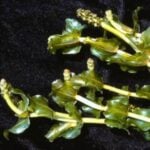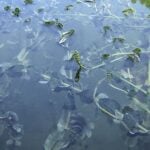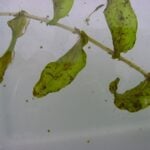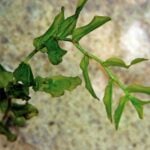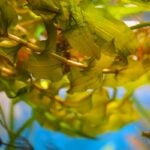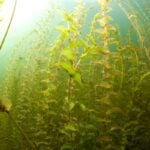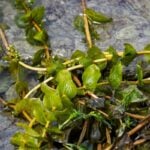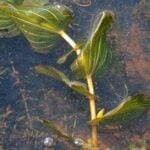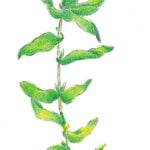Clasping Leaf Pondweed
Other Common Names: perfoliate pondweed, redhead grass, clasping leaved pondweed
(Potamogeton perfoliatus)
Native
Clasping leaf pondweed has short leaves with pointed tips that clasp around the stem.
Description
Clasping leaf pondweed can be identified by its thin, delicate, oval shaped leaves. The leaves are wide and wavy with a broad base that clasps around the stem half to three quarters of the way around.
The edges of the leaves are smooth, and the tips come to a point. Dark green to brownish leaves have 13 to 21 veins, are one to five inches long, and a half inch to one inch wide. Because of mineral deposits in the hard water in the northern half of the United States, leaves may appear brown in color.
Flower spikes may be above or below the water’s surface and are three quarters to one and a half inches tall with greenish brown flowers. The small, clustered flowers are in four to 12 whorls.
Branching stems on clasping leaf pondweed can be up to ten feet long and have white rhizomes with brown spots.
Clasping leaf pondweed can sometimes be confused with curly leaf pondweed. One way to tell the two species apart is to look at the tips of the leaves. Curly leaf pondweed tips are rounded with small teeth on the edges while clasping leaf pondweed tips are blunt and pointed.
Clasping leaf pondweed and Richardson’s pondweed are also similar. Richardson’s pondweed has a cluster of white fibers at the base of the leaves and doesn’t grow quite as large as clasping leaf pondweed.
Management Options
Click here for more information on how to control clasping leaf pondweed.
Location
Clasping leaf pondweed can be found across the eastern half of the United States.
Propagation
rhizomes, seeds
Management Options
Click here for more information on how to control clasping leaf pondweed.



